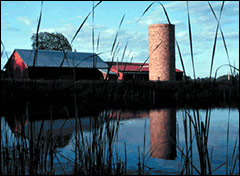The National Climatic Data Center (NCDC) just issued its September report — and the West and Southeast continue to scorch:
About 43 percent of the contiguous U.S. fell in the moderate to extreme drought categories (based on the Palmer Drought Index) at the end of September.
Here is the U.S. Drought Monitor (darker = drier):

Here are some of the drought records being set around the country:
- Drought and mild temperatures have pushed Lake Superior’s water level to its lowest point on record for this time of year, continuing a downward spiral across the Great Lakes … [T]he lake has plummeted over the past year and has dipped beneath its long-term average level for a decade — the longest such period in its known history.
- As of September 25, Pasadena experienced its driest year since records began in 1878.
- North Carolina and Tennessee had the driest year-to-date (January-September) and last 6 months (April-September) on record.
- In fact, the 2007 statewide precipitation rank for North Carolina was driest in 113 years for January-September and for the multi-month seasons April-September through August-September.
- For Tennessee, each multi-month season from November-September through May-September ranked as driest on record.
- In North Carolina and Tennessee, the dryness of recent months has been so persistent and severe that the long-term Palmer Drought Index has reached near-record severity in a short time compared to previous severe droughts.
This kind of brutal drought has severe energy implications:
- The Southeast drought has lowered rivers in Alabama to the point where there is insufficient streamflow to meet the demand of industry, agriculture, municipalities, and natural evaporation.
- Alabama Power, the state’s largest utility, has been operating some of its coal plants at significantly reduced levels to avoid raising water temperatures in the Coosa, Black Warrior and Mobile rivers.
- Last month, the Tennessee Valley Authority shut down Brown’s Ferry Number 2 nuclear power plant due to inadequate streamflow.
- Alabama Power spokesman Michael Sznajderman said, “Come the latter part of September, if the flows continue to be so low at a number of our hydro facilities … basically the turbines are going to come out of the water.”
Related Posts:
- Australia faces the “permanent dry” — as do we
- Warming Will Worsen Water Wars
- Brutal Drought Where It’s Normally Wet
- Global Warming Imperils 4th of July
- Los Angeles: Worst Drought Ever Recorded
- USA Today Almost Gets the Drought Story Right
- The NY Times Blows the Drought Story, too.
- Tiger Woods and Global Warming
This post was created for ClimateProgress.org, a project of the Center for American Progress Action Fund.



